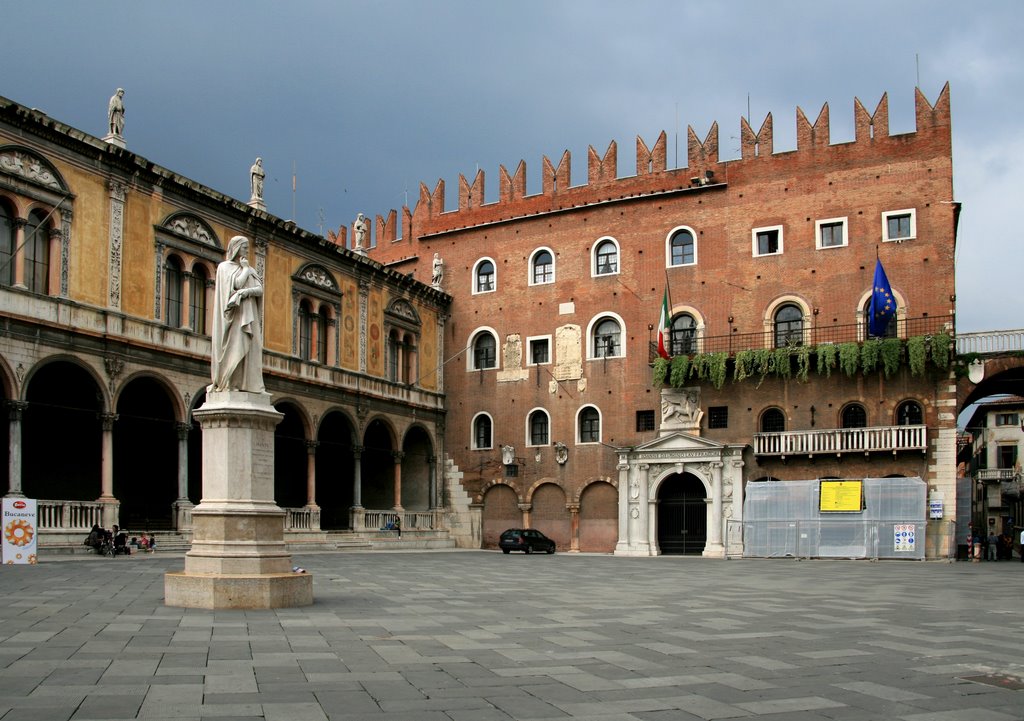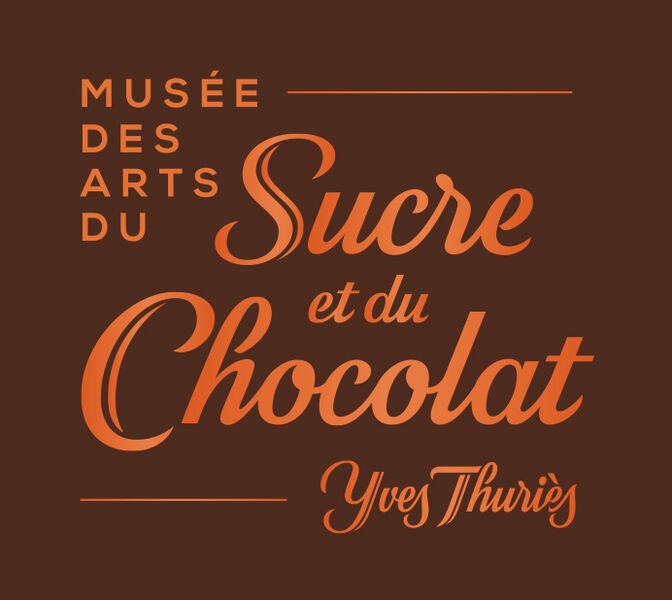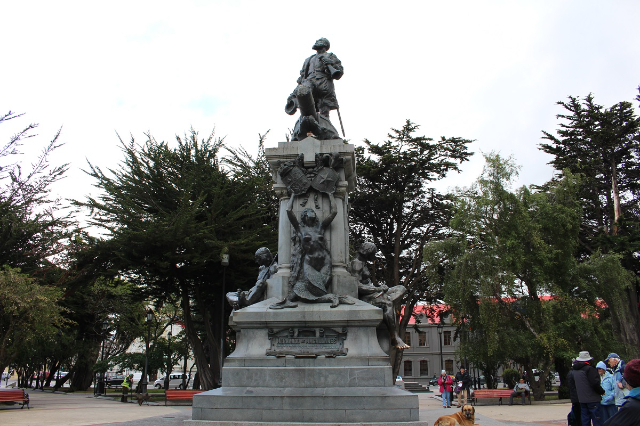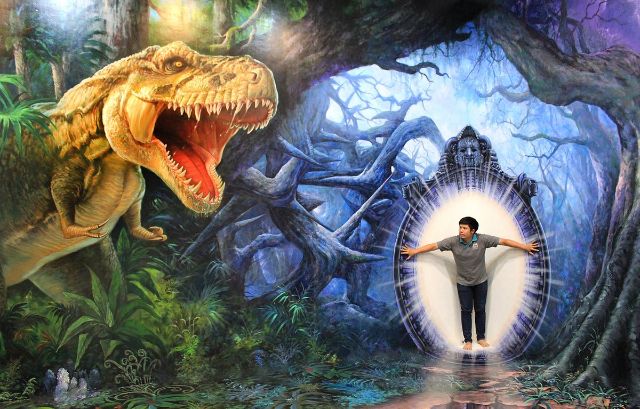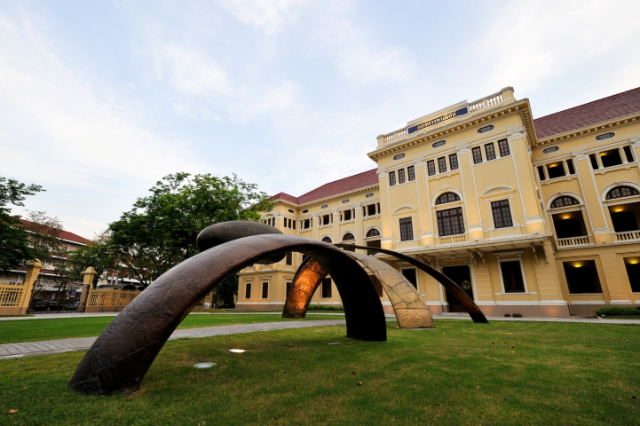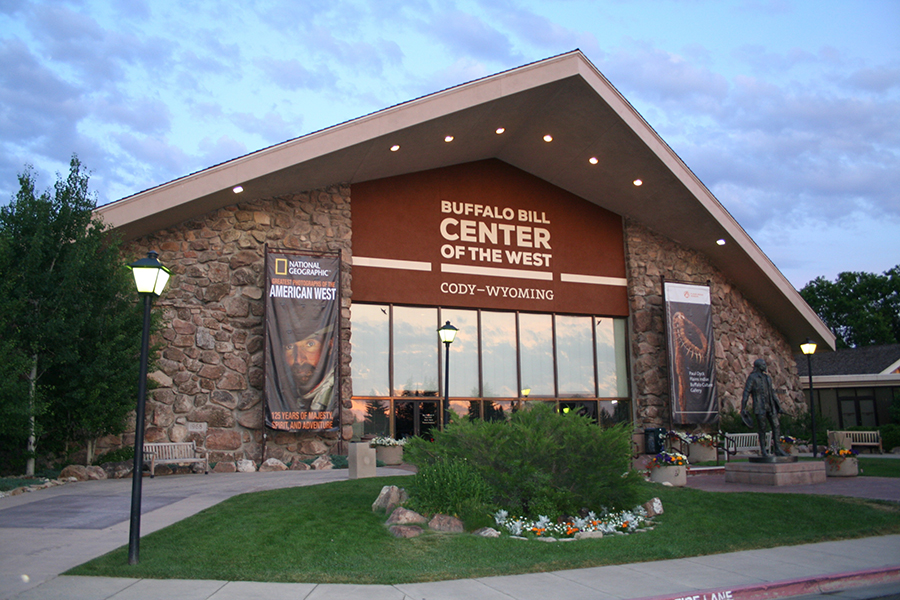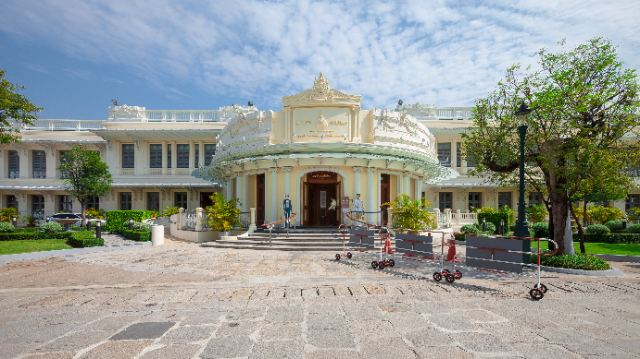The square stands on part of two Roman blocks abutting the ancient forum, now the central Piazza delle Erbe. Some years ago, archaeological excavations unearthed at the edge of the square a minor cardo and decumanus, two of the streets that made up the typical grid of every Roman city.
In the early medieval period, a series of tower-houses sprang up on the area, the vestiges of which can be found in the foundations of some of the buildings around the square.
In the communal period, public buildings of the emerging Veronese public institutions were erected around the square at later times, first among them the Palazzo del Consiglio, which, with its characteristic alternation of tufa and brick typical of Veronese Romanesque architecture, occupies almost an entire side of the square. The palace dates back to the 12th century, among the oldest public palaces in Italy, and in the Venetian era it became the city court, called the Palazzo della Ragione.
Completing the square are the Scaligeri palaces, the residence of the seigniory that ruled Verona between the late 1200s and the late 1300s with its typical Ghibelline battlements, the Palazzo del Capitano, the Loggia del Consiglio, the first Renaissance building in the Veneto region, and the Domus Nova, the residence of the judges in Venetian times. The square owes its name precisely to the fact that the places of power in medieval and Renaissance Verona were concentrated here, those where the "lords" of the city lived and moved.
The difference in styles of the buildings around Piazza dei Signori make it in fact a kind of open-air museum of architecture with the Romanesque style, the Gothic, even with the Arche Scaligere glimpsed beyond one of the arches, the Renaissance with the Loggia del Consiglio and the Palazzo del Capitano, and the pre-neoclassical forms of the Domus Nova.
Despite the great differences in appearance among the various buildings in the square, there is a common thread that contributes to a harmonious and uniform whole. The various buildings, albeit with their differences are united by arches and walkways that symbolically represented the unity of city power. On them, statues of important figures from Veronese history such as Scipione Maffei and Girolamo Fracastoro pendant with statues of Veronese figures from the Roman past on the Loggia del Consiglio.
In the center of the square a statue of Dante commemorates the hospitality the poet received at the court of Cangrande della Scala and the seven years he spent in Verona. Even today, many Veronese actually call Piazza dei Signori Piazza Dante.
Piazza dei Signori is an essential stop on any guided tour of Verona. It offers numerous insights into the history, legends, and art of the city, starting with its Roman origins, through the Lombard period and the Scaligera rise to the long period of Venetian rule, with the lions of St. Mark whose silhouettes can still be seen on many buildings.
